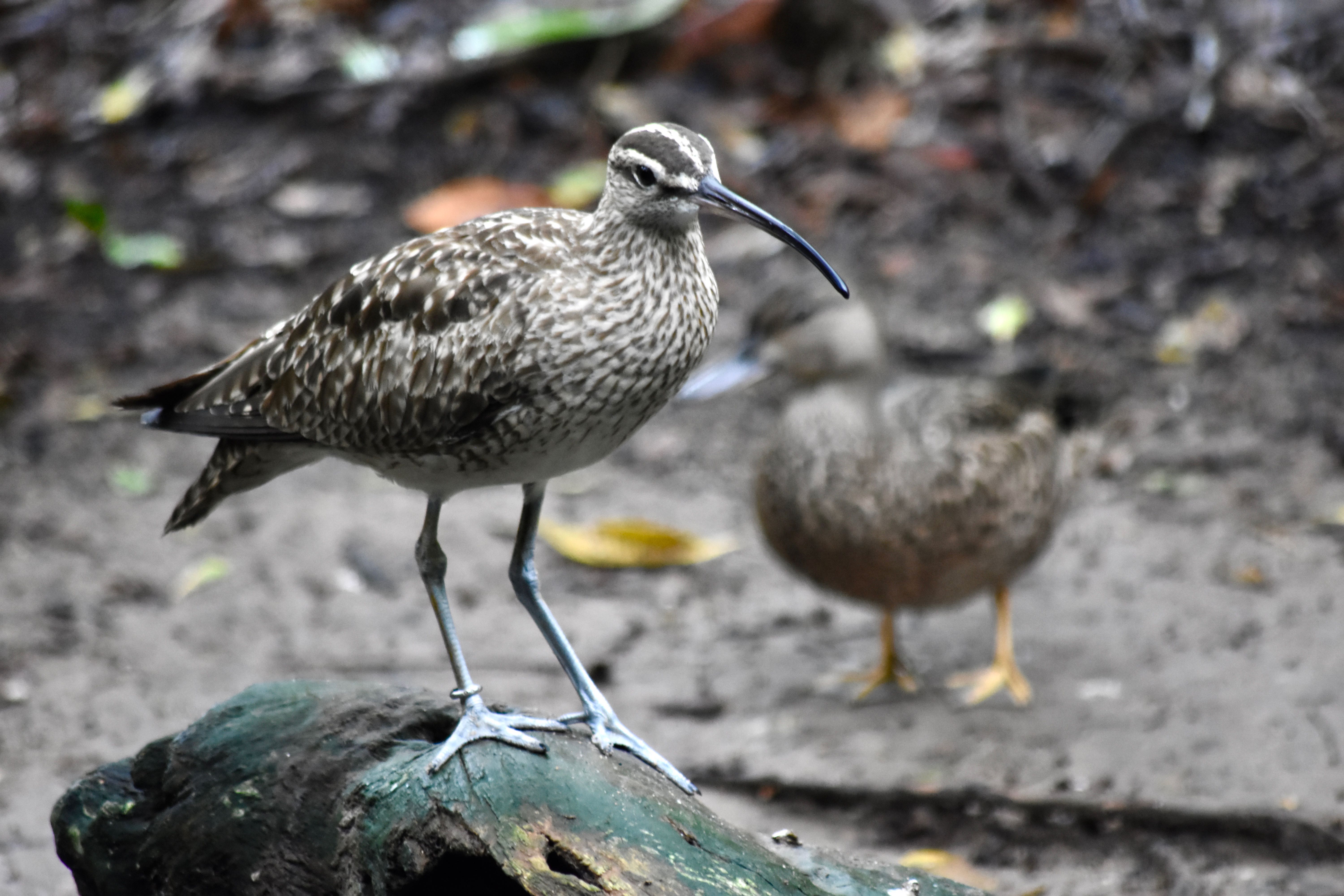
Whimbrel, photographed at the Aviario Nacional de Colombia, near Cartagena, Colombia, in October 2017.
According to the story, the whimbrel, Numenius phaeopus, gets its name from a loose interpretation of its call. An extremely loose interpretation by our estimation, by someone in England.
The point being this: for most North American birds making the flight over the Atlantic is no mean feat. For the whimbrel, showing up in England just another day at the "office." It is one astounding traveler, able to "leap" oceans in a single bound. Whimbrels migrate nearly from pole to pole and fly thousands of miles nonstop across open water. It’s been found nesting in northernmost Europe and Asia, while spending winters as far away as Africa, Australia and New Zealand. New Zealand!
In the Western Hemisphere, Whimbrels nest in extreme northern Canada and Alaska for a few months of the year before heading south to escape the winter cold. They can be found along Florida’s beaches in the cooler months, as well as along the Gulf Coast to Texas, Mexico Central America and South America, plus the Caribbean. One breeding population makes a round trip between the north slope of Alaska’s Brooks Range and Santiago, Chile. Another flies from the shores of the Beaufort Sea above the Arctic Circle near the Canada-Alaska border to northeastern Brazil, a trip of 8,000 miles. And then back. Every year.
Scientists once tracked a whimbrel who flew nonstop for seven days, covering 4,000 miles between the Acadian Peninsula in New Brunswick, Canada, and Brazil. All over the open waters of the Atlantic.
Whimbrels are large shorebirds, going 18 or 19 inches long with wingspans that can reach 33 inches. Whimbrels' most outstanding physical feature is their long, downwardly curved bill. They’re grayish white, with white underbellies and brown stripes on the head. There are four whimbrel subspecies.
They feed on crabs, clams, shrimp and marine worms, but they’ll also take a variety of spiders and insects, and berries can be an important part of their diet. So much so, that whimbrels have come in conflict with blueberry growers on the Acadian Peninsula.
Whimbrels nest on open tundra, usually picking a high spot in the terrain to keep dry. The nest, probably built by the female, is a bowl-like depression in the ground lined with grasses, mosses and lichens. Clutches are usually four eggs; both parents share sitting duties, which can take 27 or 28 days. The offspring leave the nest shortly after hatching; both parents aggressively defend their brood, attacking anything they perceive as a threat, including humans. Young whimbrels fledge after five or six weeks.
Like a lot of super-migrating sandpipers, whimbrels require staging areas where they rest and feed themselves before continuing their trips north and south. The spot on the Acadian Peninsula with the blueberry farms is one; another is along coastal Georgia and South Carolina.
There are three known nesting populations of whimbrels in the Western Hemisphere, and each has its own routes, staging areas and rest stops that they rely on every year to complete their migrations. That makes them more vulnerable to habitat loss and degradation than most birds; more places have to be preserved to ensure their survival. Fortunately for whimbrel and other species (and for us), two groups, Manomet, a New England-based conservation group, and the Western Hemisphere Shorebird Reserve Network, are doing just that.
Whimbrels are members of Scolopacidae, the sandpiper family.
